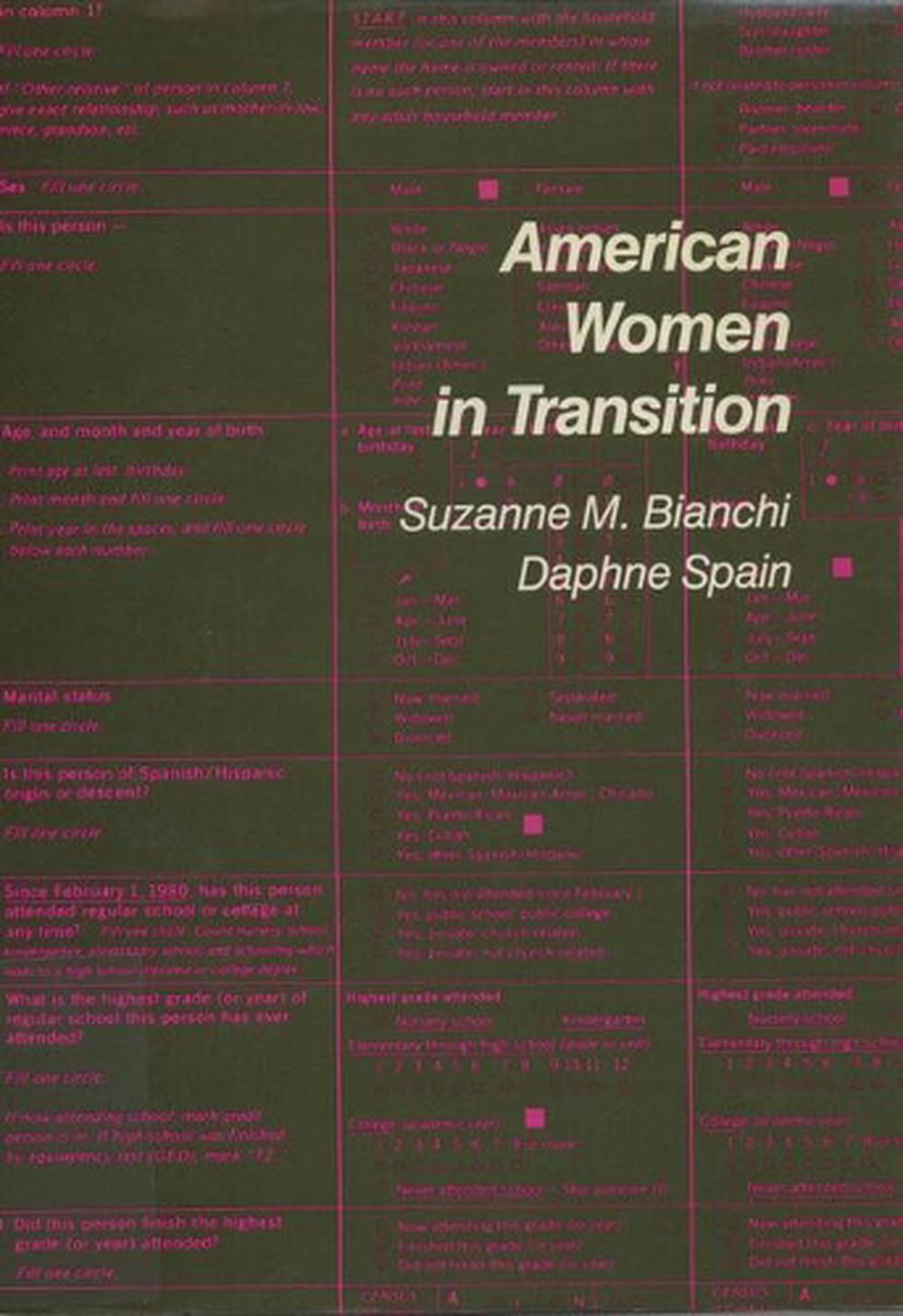
When you click on links to various merchants on this site and make a purchase, this can result in this site earning a commission. Affiliate programs and affiliations include, but are not limited to, the eBay Partner Network.
American Women in Transition by Suzanne M. Bianchi (English) Paperback Book

- Item No : 388675562829
- Condition : Brand New
- Brand : No brand Info
- Seller : the_nile_uk_store
- Current Bid : US $56.47
-
* Item Description
-
The Nile on eBay

American Women in Transition
by Suzanne M. Bianchi, Daphne Spain
Drawing on the results of the 1980 American census, this work provides an insight into the roles and needs of women in contemporary American society. It explores the social changes that have marked the movement of women away from their traditional role in the home to the realm of work.
FORMAT
PaperbackLANGUAGE
EnglishCONDITION
Brand New
Publisher Description
This series is aimed at converting the vast statistical yield of the 1980 census into independent, authoritative analyses of major changes and trends in American life. Few recent social changes have been as dramatic as the women's move from the private domain to the public, from traditional family life to the realms of work and higher education. This trend has been accompanied by an array of other social and demographic changes including: rising divorce rates, declining fertility and an increase in the number of households maintained by women. "American Women in Transition" draws on census data and other national surveys to document American women's increasing educational attainment and labour force participation and the "Balancing Act" required to reconcile these with their continued commitment to marriage and family. Pointing to the lack of affordable child care and women's lower earning power the authors describe the current realities of women's lives in a society which has not yet adapted to their changing status.This study provides an insight into the roles and needs of women in contemporary American society, but, at its core, it has a rigorous statistical discipline, and to women throughout Western society its findings will sound familiar.
Table of Contents
Part 1 Marriage patterns: first marriage; cohabitation; divorce; widowhood; remarriage. Part 2 Childbearing: fertility trends; changing birth expectations; contraception and abortion; timing of fertility; teenage out-of-wedlock fertility. Part 3 Living arrangements: changing distribution of households; changing propensities to live independently; living arrangments of the elderly; changes in nonfamily living in the 1970s; nonfamily living among young adults; families maintained by women. Part 4 Education: educational attainment; college enrollment; field of study; educational attainment and age at first marriage; educational attainment and fertility; the role of the same sex parent; consequences of higher education. Part 5 Labour force participation and occupational composition: trends in labour force participation; trends in women's attachment to the labour force; sex differences in labour force participation; sex differences in experience, tenure, and on-the-job training; occupations; beyond occupation: sex differentiation in specific job titles. Part 6 Earnings: trends in the sex differential in earnings; age, education and earnings differences by sex; earnings differences within occupations; why do women earn less than men?; pay equity for women. Part 7 Income, poverty, and per capita well-being: trends in labour force participation and earnings of wives; trends in labour force participation and earnings of female householders; female-maintained families and poverty; child support; economic well-being of women and men. Part 8 Work, home, and children - the balancing act: labour force participation and fertility; child care arrangements; employment and household chores; employment and psychological well-being.
Details
ISBN0871541122Author Daphne SpainYear 1986ISBN-10 0871541122ISBN-13 9780871541123Format PaperbackLanguage EnglishMedia BookDOI 10.1604/9780871541123Imprint Russell Sage FoundationPlace of Publication New YorkCountry of Publication United StatesIllustrations bibliography, indexAU Release Date 1986-09-02NZ Release Date 1986-09-02US Release Date 1986-09-02UK Release Date 1986-09-02Pages 286Publisher Russell Sage FoundationSeries The population of the United States in the 1980s: a census monograph seriesPublication Date 1986-09-02DEWEY 305.420973Audience Undergraduate


-
- The Lost Super Foods
- $ 37.00
- The Self-Sufficient Backyard
- $ 37.00
- A Navy Seals BUG IN GUIDE
- $ 39.00
- Childrens Books Phonics Lot 60
- $ 33.99
















